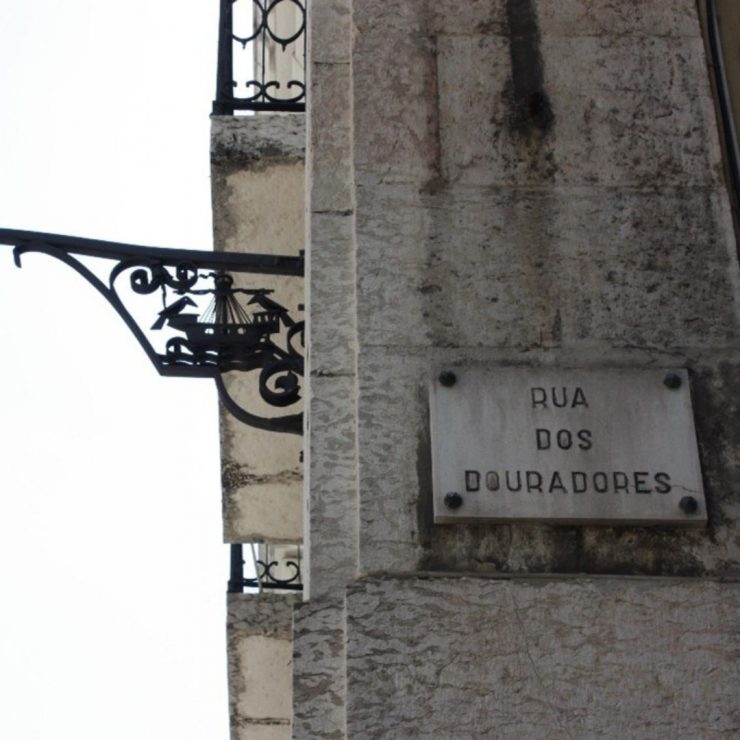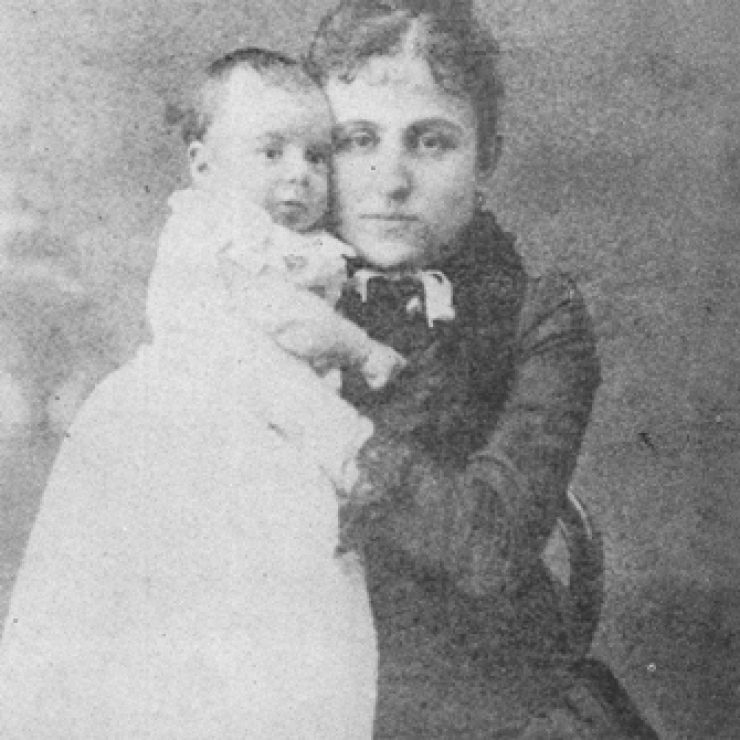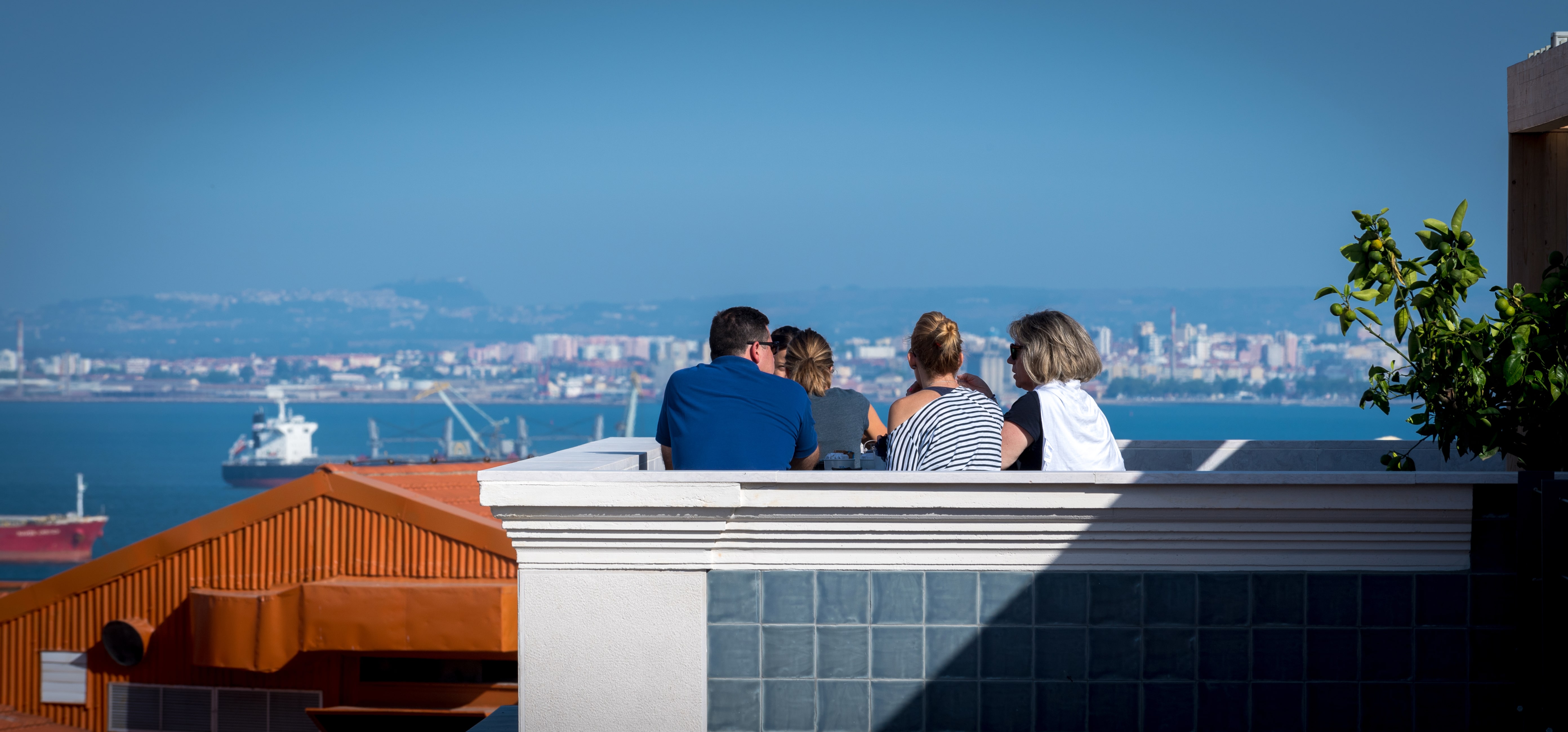
20 reasons to visit Lisbon, Portugal
Lisbon has been trendy for some time. It is no longer the unknown capital of Europe, the city has flourished and is on the map of tourists from all over the world, including international pop and film stars who have helped to further popularize the city. It is considered the cheapest destination in Western Europe and offers culture, architecture and history. There are many reasons to visit Lisbon, known by the city of the 7 hills. Here are some choices.
DAY 1
Morning
9AM Start the first day by having breakfast with an iconic view over the city and the river and watching the Lisbon light in the morning. The Lisboa Pessoa Hotel has one of the best views of the capital, from its two terraces located on the 5th floor and the interior niches (small divisions, like a capsule, with tables for up to four people, each with a window and view “toilet”). After satisfying that important sense, the taste, start putting the remaining senses into practice with the next suggestions.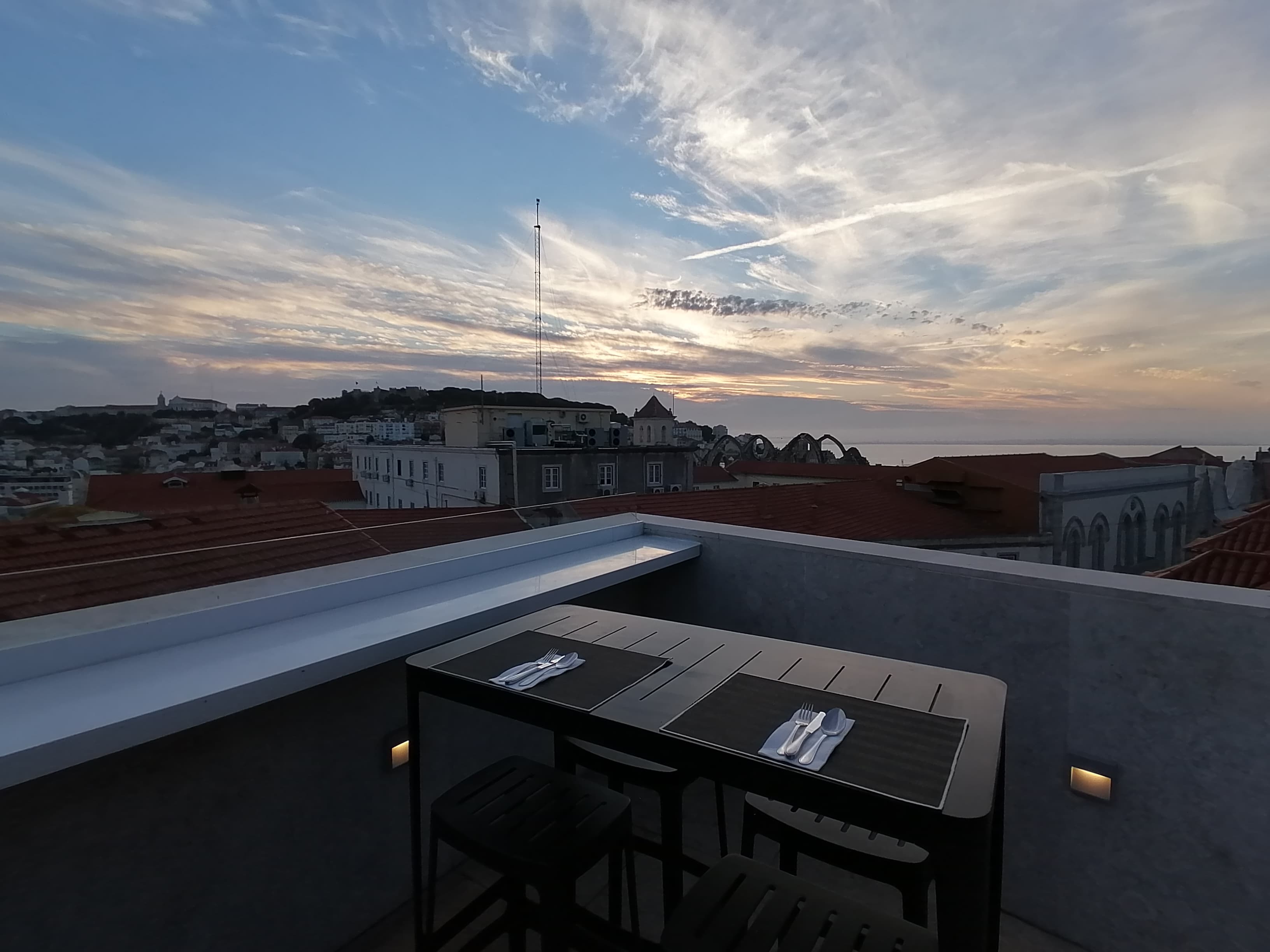
Lisbon has been in fashion for some time. It is no longer the unknown capital of Europe, the city has flourished and is on the map of tourists from all over the world, including international pop and film stars who have helped to further popularize the city. It is considered the cheapest destination in Western Europe and offers culture, architecture and history. There are many reasons to visit the city of the 7 hills. Here are some choices.
10AM Church of Convento do Carmo / Archaeological Museum of Carmo / Ruins of Carmo. Walk to Largo do Carmo, 1 minute from the hotel, take the opportunity to contemplate this square full of restaurants, terraces and history. This square was an important milestone for the April 25 revolution and it was also in one of the buildings here that the writer Fernando Pessoa lived.
The Convento do Carmo is the place where you can learn more about the history of Portugal and where you can imagine the greatness of this place at that time. It was once the main Gothic church in the capital, but it was in ruins due to the earthquake and subsequent fire of 1755. The habitable part of the convent was converted into military installations in 1836. The Quartel do Carmo was an important landmark in the Carnation Revolution. The visit should take between 1h to 2 hours.
Regular ticket: from 5€
11:30AM Continue walking the cobbled streets until you reach the emblematic Praça Luís de Camões, which honors one of the greatest Portuguese writers. Then go down Chiado and Rua Garrett to Armazéns do Chiado. Continue down until you pass the Arco da Rua Augusta and find Praça do Comércio, next to the Tagus river. Choose one of the many restaurants and terraces to have lunch. Portuguese have lunch normally around 1PM.
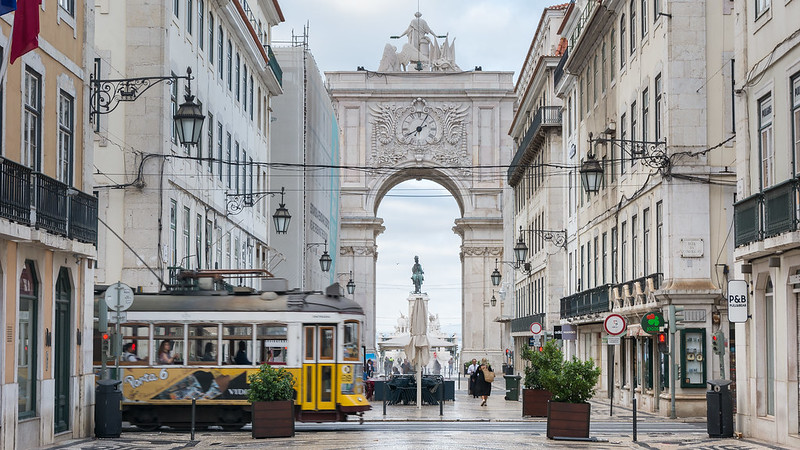
Afternoon
2PM Return to the visit and go to the Archaeological Center of Rua dos Correeiros (NARC), an interesting and different visit. It is worth seeing the ruins of our ancestors (a guided tour is suggested not to miss a bit of history).
Free entrance
3:30PM After spending an hour discovering things from the past, head to the Museum of Contemporary Art, and absorb the latest works of art. Without a doubt, the good thing about this city is this mixture between the old and the modern world.
Regular ticket: from 4,5€
5PM Take a taxi / bus / uber / tram to the neighborhood of Campo de Ourique. At Rua Sampaio Bruno you will find a geomonument that allows us to travel back in time to a tropical past in Lisbon, free of charge.
6PM From Campo de Ourique to Jardim da Estrela is about 1km which can be done by foot in 15 minutes. Enjoy the tranquility and this beautiful well-kept green garden. If you cross the street you are facing the Basilica da Estrela. Good for taking children too. Easy to get in and out. There is public transport, parking and taxi.
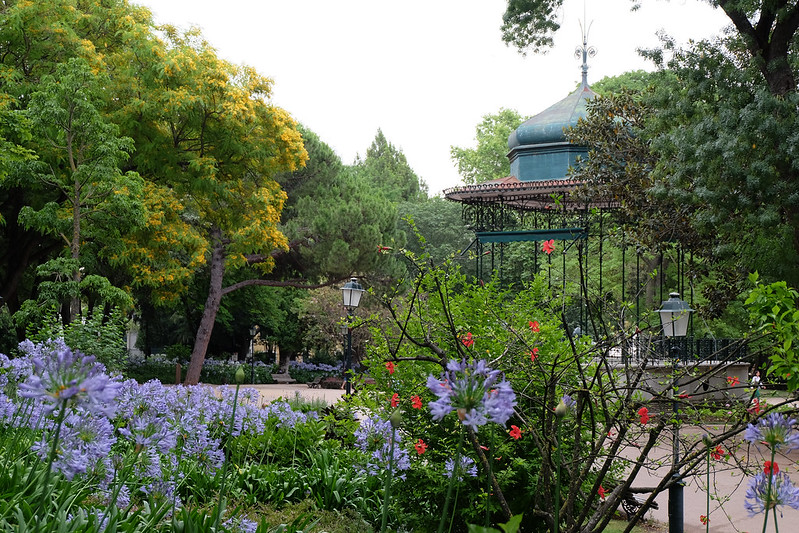
Late afternoon. Lisbon is almost always sunny and for this time of day, when the light turns golden, choose one of these 5 viewpoints with the best sights.
At night, one of “Lisboetas” favourite destinations for a drink and a meal is the typical Bairro Alto. Enjoy every minute of the streets full of restaurants that suit all tastes. Savor the bohemian, fun and diversity of this neighborhood. Chiado is also a great option for dinners, due to the wide range of cosmopolitan and traditional restaurants of the highest quality.
DAY 2
Morning
10AM After having the most important meal of the day, one of the most important museums in Lisbon is undoubtedly the Calouste Gulbenkian Museum, next to Praça de Espanha, on Avenida de Berna. Inserted in the Calouste Gulbenkian Foundation, it houses the private collection of the founder and a collection of modern and contemporary art; an orchestra and a choir; an art and archive library; a scientific research institute and a garden that is one of the best managed green areas in the city center, also known as a zone of great concentration of offices and newer housing.
11:30AM LX Factory. 5 km from Lisbon’s “business center” is the old factory complex, LX Factory (LXF), in Alcântara, transformed into a creative leisure area with 23,000m2 of offices, shops and restaurants in demand for fashion and film production. In LXF there is an industrial environment and the greatest example of this is the bookshop “Ler Devagar”, with a unique architecture to match the complex where it is located. It is recommended to have lunch here, the restaurant options are quite good.
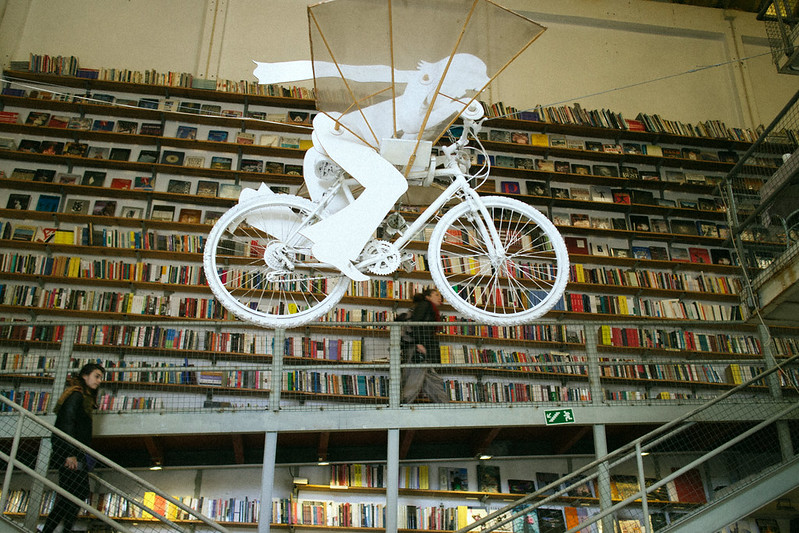
Afternoon
1:30PM For something more radical, follow the route to Pilar 7, an experience to discover the history of the 25 de Abril Bridge, opened in 2017.
Normal ticket: 5€
2:30PM MAAT Museum of Art, Architecture and Technology. After Alcântara and the Ponte 25 de Abril, continue to riverside area of Belém. The EDP Foundation’s campus covers an area of 38,000m2 that includes a converted thermoelectric power plant – Central Tejo – an emblematic building of industrial architecture built in 1908. The architecture of this museum is an example of the best that is done in Portugal today and its exhibitions are an incursion into the themes of construction, science and art.
Regular ticket: from 5€
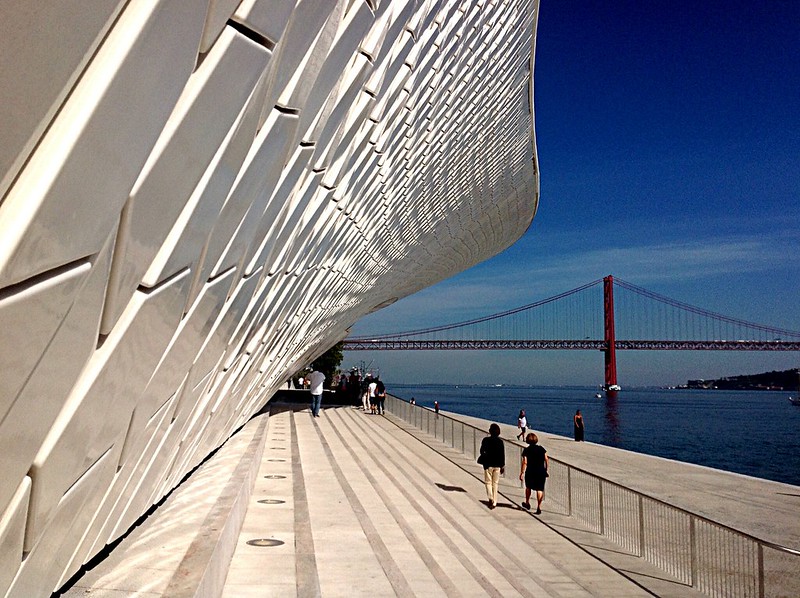
3:00PM Jerónimos Monastery. Also in Belém is the most visited monument in Lisbon. If you want to discover the masterpiece of Portuguese architecture from the 16th century, this is the mandatory visit. The Jerónimos Monastery is located in one of the most qualified areas of Lisbon, a historic and monumental setting next to the Tagus River, the place from which the ships and caravels left in the time of the Discoveries that would give “new worlds to the world”.
Regular ticket: from 10€
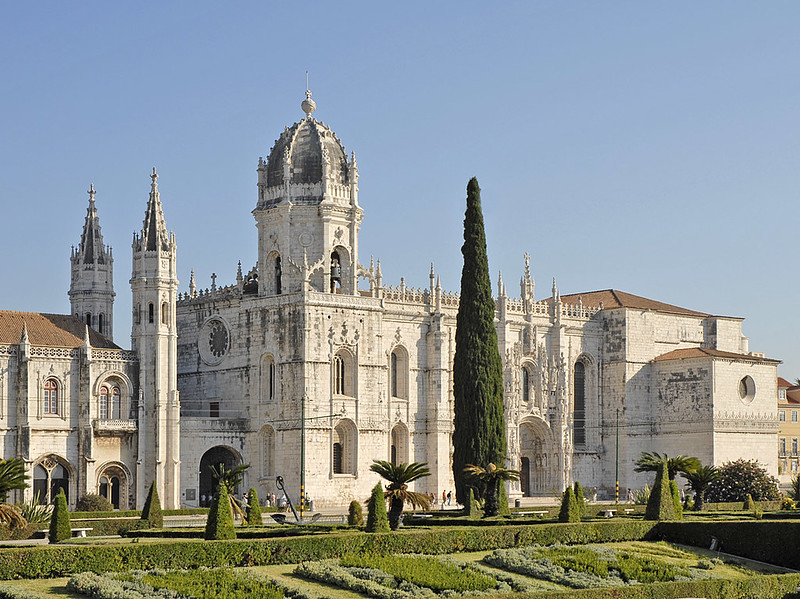
5PM Belém Tower. Late afternoon is a great time to visit the Belém Tower (don’t forget that in winter the last admission is at 5pm). Strategically built on the north bank of the Tagus River between 1514 and 1520, under the guidance of Francisco de Arruda, the Belém Tower is one of the architectural gems of the reign of D. Manuel I. You cannot miss it!
End with a visit to the popular Pastéis de Belém. The waiting time in the queue will seem short and well spent when you are tasting the delicious, crispy and sweet “pastéis de nata”, made in this house since 1837. At dinner, do not forget to book a table at Mensagem inside or in one of the terraces!
If you liked these 20 suggestions of what to do in Lisbon in 48 hours, stay tuned to our blog where we will continue to give you (good) reasons to visit Lisbon, among other beautiful cities in Portugal.


